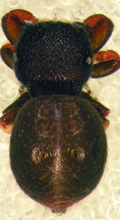Latest News Archive
Please select Category, Year, and then Month to display items
![]()
The executive management of the University of the Free State (UFS) takes note of the recording made by a spectator at Shimla Park on the Bloemfontein Campus during the Varsity Cup rugby match between Shimlas and the University of Johannesburg on Monday 26 February 2018. As the recording was made from behind, attempts are being made to identify the persons who were seated during the singing of the National Anthem, and stood up and sung only the Afrikaans part of the National Anthem. It is not clear at this stage if all the individuals in the recording are registered students of the UFS. However, the executive management is of the opinion that – although it might be unintentional – the message that is being conveyed through the action of the individuals is disrespectful towards the country’s National Anthem.
Released by:
Lacea Loader (Director: Communication and Brand Management)
Telephone: +27 51 401 2584 | +27 83 645 2454
Email: news@ufs.ac.za | loaderl@ufs.ac.za
Fax: +27 51 444 6393
UFS entomologists describe a new spider species
2014-02-19
|
 |
It is about 3mm in size and almost looks like a ladybird, but this new spider is the cause of great excitement at the University of the Free State’s (UFS’s) Department of Zoology and Entomology.
The new species of spider, now known as Rhene amanzi, was recently described for the first time and was ‘introduced’ to other arachnologist at the recent congress of the African Arachnology Society at Amanzi Private Reserve.
Dr Charles Haddad, senior lecturer in the UFS’s Department of Zoology and Entomology, said they already stumbled upon the male spider in 2010 when a student was doing research at the reserve. After a very long process, the spider was described and a couple of weeks ago, whilst at the congress, they also found the female.
“Up to now we only know that the spider lives in trees in the Brandfort area. The range could be wider, but since it was only described recently, other arachnologists will only now be able to identify accurately.”
Dr Haddad says they still have to determine how many eggs the female is able to lay, what the spider’s life cycle looks like and what their habitual preferences are.
“What we do know is that it probably isn’t poisonous and that the spider imitates a ladybird in order to protect itself against predators.”